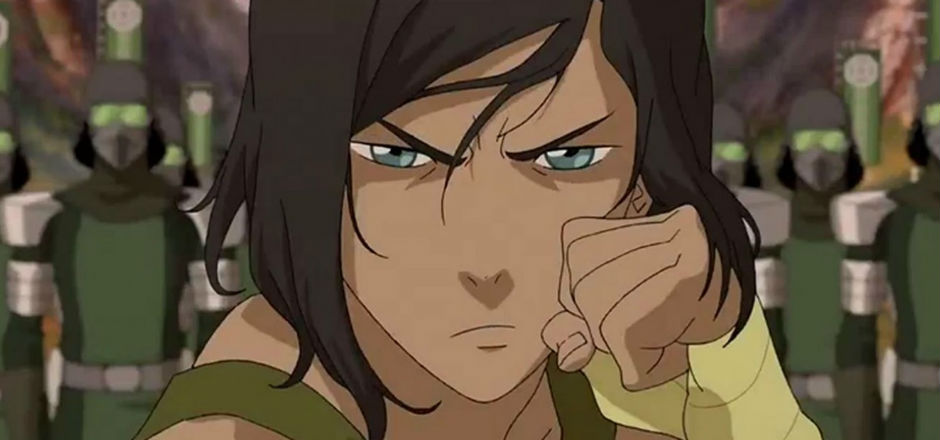[dropcaps]I[/dropcaps]’m probably in the minority for admitting that I did like the second season of The Legend of Korra. While there were some big hiccups along the way (I thought we were going to leave that pesky love triangle in Book 1, but lo and behold!), I thought the season brought up some good conflict for Korra to deal with. After the… interesting ride that was the Book 2 finale, I and many other fellow fans were wondering where the creators were going to take the show.
Thankfully, Book 3 proved to be a great season (no love triangles-yes!). They concluded the season with a really intense finale which featured a chained-up Korra receiving mercury poison from that season’s big bad, Zaheer. Fortunately with the help of Suyin Beifong, Lin’s sister, they were able to get the poison out of Korra’s body.
I think a lot of viewers thought Korra would get back on her feet after the poison removed. We witnessed her get her bending taken away and losing her connection with the past Avatars in the previous seasons. Although Korra still couldn’t connect with the past Avatars, her bending was restored.
However, those thoughts were gone when we saw the aftermath of Korra’s battle with Zaheer. Near the end of the episode, Korra’s wheelchair-bound with a somber expression on her face as she watches Jinora’s coronation take place.
As predicted, Book 4 continued to show us Korra’s journey through recovery. In “Korra Alone,” we see Korra going through physical therapy with Katara’s help. Even though she eventually healed physically, she still had a lot of emotional healing to do.
There was no surprise that, throughout Book 4, Korra still had flashbacks of her fight with Zaheer. In a few instances, she had hallucinations of herself in the Avatar state. During her fight with Kuvira in Zaofu, she imagined Kuvira as herself in the Avatar state. Her defeat at Kuvira’s hands only added to her doubts about whether or not the world still needed her as the Avatar.
It was very difficult to see Korra go through this. It’s such a contrast from her optimistic and rebellious personality. Although there were moments earlier in the series where Korra struggled with defeating enemies and personal matters, it’s still jarring watching her going through such emotional pain.
While it was hard to watch Korra struggle physically and emotionally, it was impressive to see the show portraying someone experiencing PTSD and her road to recovery. This isn’t the first time fans of Avatar saw a character go through the aftermath of trauma. In Avatar: The Last Airbender, Aang was shown to have doubts about being the Avatar, especially due to the genocide of his people and his defeat to Azula. Korra takes this concept and delved into it by showing Korra’s recovery is a slow process full of setbacks.
On the flip side of the coin, it was great to see Korra slowly but surely find some inner peace. During her time at the swamp with Toph, Korra was able to bend the remaining liquid metal out of her body. In turn, her recovery showed her how Zaheer and her other previous enemies had good intentions, but unfortunately were extremely unbalanced while trying to achieve them. With this realization, she was able to find a connection to Kuvira as the two had a talk-to-talk in the spirit world.
Since the latter seasons were such improvements from the first two in the series, it’s such a shame that Nickelodeon only aired the episodes online after the seventh episode of Book 3. Despite this huge step back, Nickelodeon did briefly air all the episodes to prepare for Korra’s series finale.
Whoever does watch the show will know that the road to recovery is a long and grueling process. But Korra’s journey shows that despite the process, recovery is still possible.
—
Janelle Smith is a TV & Film Writer at Girls in Capes. She is a senior at Ohio State University majoring in film studies and minoring in studio art.
The Legend of Korra was one of our Editor’s Picks for the Best of 2014 — find the others here.






